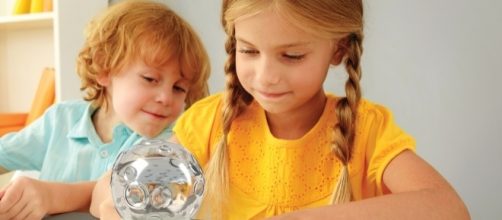Brine shrimp are a popular and easy-to-care-for pets. A unique form of crustacean known as “Artemia”, Brine Shrimp eggs have a biological process called “Diapause” that enables them to hibernate and only hatch when submerged in water. On February 16, 2017, a company called World Alive launched a Kickstarter campaign to support their latest brine shrimp—which they call “Aqua Dragons”—project known as “Aqua Dragons in Space.” The company aspires to send 13.8 million brine shrimp eggs into space. Moreover, backers who pledge over $2,000 will have the chance to send a personal item into space, too.
The campaign is aiming to raise $50,000 so they can send the eggs into space, bring them back to Earth, and then package them and offer them to kids. Essentially, the campaign gives children a chance to own and love pets that have journeyed to the outer most layers of Earth, near space. Backers can contribute between $5 to $3,000 and are guaranteed a set of the space-traveling creatures.
Background
Initially, World Alive was simply thinking of creating space-themed kits. “Several kids have asked me whether Aqua Dragons are aliens which led to the space concept,” said Amy Holden, the Founder and Directory of World Alive S.L. Creators of Aqua Dragons. “My husband read a newspaper article about a company that offered space transport services and it peaked my interest.
The idea of sending the eggs up in a bulk payload to then provide to the consumers in the kits with an authenticity certificate and access to the space flight video is a world first.” Brine shrimp have already been taken into space by both NASA and Russian missions. Amazingly, the hatch rate improved for eggs that had been sent into orbit making it clear that space travel does not harm the tiny creatures in any way. “Since there had been previous experiments and our biologist is extremely knowledgeable, we are sure the eggs will be fine,” Amy Holden stated. “We have done some low temperature and vacuum tests on the ground late last year and the eggs were perfect afterwards. In January, we sent 20 grams of eggs up on a space cargo flight and they hatched normally upon return.
Artemia eggs have survived ice ages and long drought periods on Earth. They are naturally very hardy and cold temperatures like those in space actually preserve them.”
Plan
The space flight consists of eggs in the space capsule being attached to a flight train and a large meteorological balloon that is filled with helium. “It has to be carefully planned in order to predict the trajectory and air traffic control has to give permission so to ensure there is no danger for planes,” Amy declared. “The balloon takes the space capsule up with AV and GPS technology aboard and rises to about 40km which is four-times higher than where planes fly.” As it reaches space the helium in the balloon expands, as space is a vacuum.
Eventually the balloon bursts and the payload and flight train goes into a free fall. The parachute then deploys and the payload floats safely and slowly back to Earth, where the recovery team collect it usually only a few hundred miles from the launch site. The $50,000 proceeds from the Kickstarter will be spent on the space flight and the cost of the production of the kits, shipping, and taxes. Tackling the topic of space engineering was challenging for World Alive so they partnered with space transport experts who attained doctorate degrees in their field. Banking on the project’s success, since the Kickstarter was launched four international distribution partners have been assigned for Australia, the UK, Poland, and the US.

